Field Studies
LUMBERTON FIELD STUDY
In early October 2016, Hurricane Matthew crossed North Carolina as a Category 1 storm, with some areas receiving 0.38 m to 0.46 m (15 to 18 in) of rainfall on already saturated soil. The National Institute of Standards and Technology (NIST) funded Center for Risk-Based Community Resilience Planning teamed with researchers from NIST’s Engineering Laboratory (Disaster and Failure Studies Program, Community Resilience Group, and the Applied Economics Office) to conduct a quick response field study focused on the small city of Lumberton, NC and the flooding they experienced from the Lumber River.
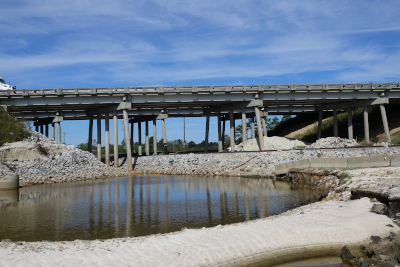
The field study takes a holistic approach to understand community resilience. The sample was uniquely designed to integrate disciplinary perspectives of engineering and social science. The sample started with the inundation map for Lumberton, mapped out school zones, and then pulled a two-stage random cluster sample proportioned 3 to 1 with housing units in and outside of the inundation zone, respectively. Housing, an inherently social, economic, and physical system, directed the unit of analyses to housing units, as opposed to households. Businesses were randomly selected within a region around the residential sample under an assumption that people work and shop closer to where they live. Beyond the longitudinal surveys conducted with the same housing units and businesses during each data collection wave, interviews with school representatives, city and state representatives, and Lawrence pubic works are also performed to provide depth and context to survey findings. The integrated study design is depicted in the image below.
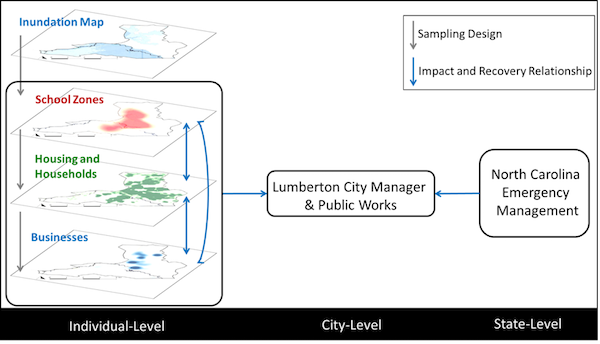
As shown in the timeline below, our team’s first trip to Lumberton was in November 2016. This first trip is termed Wave 1, and focused on documenting initial conditions after the flood for continued study of community resilience and recovery.
We returned in January 2018, termed Wave 2, to document continued recovery progress for the same sample of business and housing units using closed-ended surveys, as well as performed semi-structured interviews with the same school, public works, city and state representatives.
In September 2018, Lumberton was again disrupted by Hurricane Florence. Our team deployed rapidly to document the damage and disruption to our housing and business samples. We returned in December 2018 to conduct interviews and sit in on important meetings as decisions were being made about rebuilding public housing. We again returned in April 2019 for surveys and interviews to document cascading disruption from both hurricanes, and continued recovery. Collectively these three trips are termed Wave 3.
The COVID-19 pandemic caused disruption worldwide, including a disruption to our study. Data collection for Wave 4 began in February 2021 with the primary objectives of documenting continued recovery progress from both flood events, as well as intersecting impacts from the pandemic.

The primary goal for Wave 1 was to assess the initial damage to physical infrastructure and disruption to the social and economic systems. The residential sector was selected as our target. Damage to housing was assessed through detailed engineering evaluations. Utility disruption, household dislocation, work and school interruption were gained through structured surveys performed with households via a stratified random sample of housing units. The primary goal of Wave 2 was to investigate what comes after the initial damage, dislocation, and socioeconomic impacts, and to collect the necessary data to capture the process of recovery. Wave 2 had two primary objectives to support ongoing research within and across the CoE:
Longitudinal Study Objectives: to collect spatio-temporal data on community impact and recovery processes for individual sectors (housing, business, schools, public works, city and state decision-making) and how they integrate.
Wave 1 Objectives: establish initial conditions after the flood.
Wave 2 Objectives: document continued recovery processes.
Wave 3 Objectives: establish initial conditions after the Hurricane Florence-induced flood; document interactions between Hurricane Florence impacts and Hurricane Matthew recovery.
Wave 4 Objectives: document continued recovery processes, as well as impacts of the COVID-19 pandemic.
The Lumberton field study is ongoing.Field Study Topics
- Why a longitudinal study?
- Field team safety protocols.
- Pre-deployment training.
- Data collection during the COVID-19 pandemic.
- Hurricane Matthew and Florence.
- Looking ahead to mitigation and preparedness.
- Recovery funds for households and businesses.
Lumberton Photo Gallery
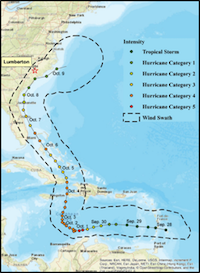
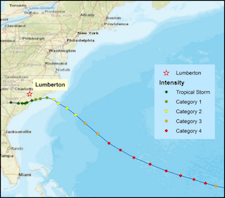
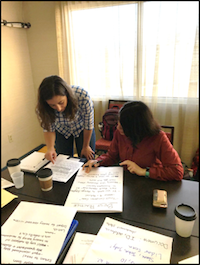
and Judy Mitrani-Reiser
plan for the next field day (Jan. 2018)

and Shane Crawford capture LiDAR
data of levee (Jan. 2018)

assessing interior damage
after Hurricane Florence (Sept. 2019)
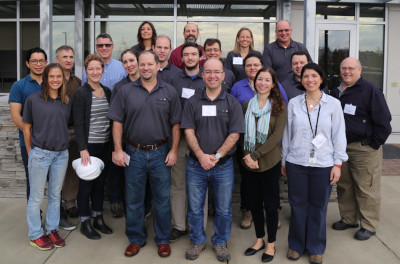
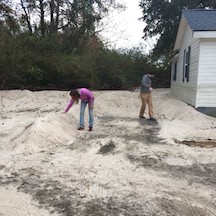
assess displaced sand after flooding (Nov. 2016)
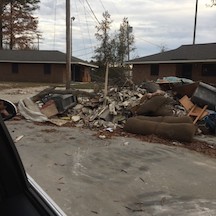
for public housing in Lumberton (Nov. 2016)
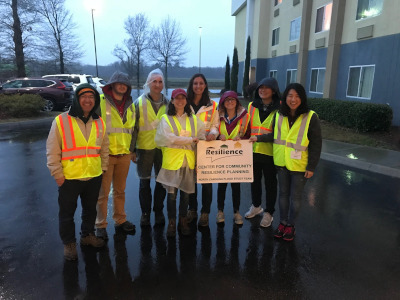
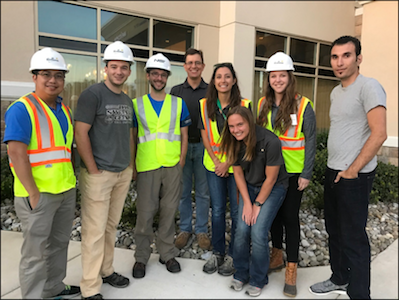
2021 Lumberton Research Team
Our multi-disciplinary team is comprised of researchers from across the country.

(OSU)

(NIST)

(TAMU)
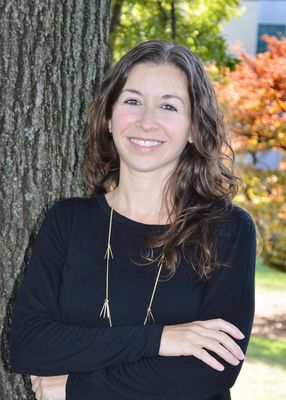
(NIST)

(ULL)

(NIST)

(CSU)

(TAMU)

(SBU)

(NIST)

(NIST)

(LSU)

(KU)

(TAMU)

(ECU)
CoE co-director

(NIST)

(CPU)

(TAMU)

(CSU)

(Rice)

(TAMU)

(NIST)

(TAMU)

(TAMU)

(KU)
Field Study Lead

(USNA)

(CSU)
CoE co-director

(TAMU)
Lumberton Publications
Reports
van de Lindt, J.W., W. G. Peacock, J. Mitrani-Reiser, N. Rosenheim, D. Deniz, M. Dillard, T. Tomiczek, M. Koliou, A. Graettinger, S. Crawford, K. Harrison, A. Barbosa, J. Tobin, J. Helgeson, L. Peek, M. Memari, E. Sutley, D. Gu, S. Cauffman, and J. Fung. (2018). Community Resilience-Focused Technical Investigation of the 2016 Lumberton, North Carolina Flood: Multi-Disciplinary Approach. van de Lindt, J.W., W. G. Peacock, and J. Mitrani-Reiser (eds). National Institute of Standards and Technology (NIST SP 1230). doi.org/10.6028/NIST.SP.1230.
Sutley, E., M. Dillard, J.W. van de Lindt, W. G. Peacock, J. Mitrani-Reiser, S. Hamideh, D. Gu, N. Rosenheim, S. Crawford, K. Seong, S. Van Zandt, M. Watson, Y. Xiao, J. Helgeson, K. Wu, J. Tobin, and K. Harrison. (2021). Community Resilience-Focused Technical Investigation of the 2016 Lumberton, North Carolina Flood: Community Recovery One Year Later. Sutley, E., Dillard M., and van de Lindt, J.W. (eds). National Institute of Standards and Technology (NIST SP 1230). doi.org/10.6028/NIST.SP.1230-2.
Journal and Conference Papers
Peek, Lori, Tobin, J., van de Lindt, J., and Andrews, A. (2021). Getting Interdisciplinary Teams into the Field: Institutional Review Board Pre-Approval and Multi-Institution Authorization Agreements for Rapid Response Disaster Research. Risk Analysis: An International Journal 41(7): 1204-1212, doi.org/10.1111/risa.13740..
van de Lindt, J.W., Peacock, W.G., Mitrani-Reiser, J., Rosenheim, N., Deniz, D., Dillard, M., Tomiczek, V., Koliou, M., Graettinger, A., Crawford, S., Harrison, K., Barbosa, A., Tobin, J., Helgeson, J., Peek, L., Memari, M., Sutley, E., Hamideh, S., Gu, D., Cauffman, S., and Fung, J. (2020). Community Resilience-Focused Technical Investigation of the 2016 Lumberton, North Carolina Flood: Multi-Disciplinary Approach. 21(3). doi.org/10.1061/(ASCE)NH.1527-6996.0000387.
Watson, M., Xiao, Y., Helgeson, J., & Dillard, M. (2020). Importance of households in business disaster recovery. Natural Hazards Review, 21(4), 05020008. doi.org/10.1061/(ASCE)NH.1527-6996.0000393.
Aghababaei, M., Koliou, M., Watson, M., & Xiao, Y. (2020). Quantifying post-disaster business recovery through Bayesian methods. Structure and Infrastructure Engineering, 1-19. doi.org/10.1080/15732479.2020.1777569.
Deniz, D., Sutley, E.J., van de Lindt, J.W., Peacock, W.G., Rosenheim, N. Gu, D., Koliou, M. and Hamideh, S. (2019). Flood Performance and Dislocation Assessment for Lumberton Homes after Hurricane Matthew. 13th International Conference on Applications of Statistics and Probability in Civil Engineering, ICASP13, Seoul, South Korea, May 26-30, 2019.
Sutley, E.J., Hamideh, S., Dillard, M.K., Gu, D., Seong, K., and van de Lindt, J.W. (2019). Integrative Modeling of Housing Recovery as a Physical, Economic, and Social Process. 13th International Conference on Applications of Statistics and Probability in Civil Engineering, ICASP13, Seoul, South Korea, May 26-30, 2019.
Aghababaei, M., Koliou, M., Watson, M., & Xiao, Y. (2019). Modeling business recovery after natural disasters: The case study of Lumberton, NC following Hurricane Matthew. In Proc., 2nd Int. Conf. on Natural Hazards and Infrastructure (ICONHIC 2019). Athens, Greece: Innovation Center for Natural Hazards and Infrastructure.
Datasets and Data Collection Instruments
Deniz, D., van de Lindt, J., Tomiczek, T., Koliou, M., Barbosa, A., Sutley, E., Peacock, W., Mitrani-Reiser, J., Jones, C., Coulbourne, W. (2020) "Building Damage Survey Instrument, November 26, 2016: Wave 1", in A Longitudinal Community Resilience Focused Technical Investigation of the Lumberton, North Carolina Flood of 2016. doi.org/10.80023/ds2-5eet-7016.
Peacock, W., Rosenheim, N., Gu, D., VAn Zandt, S. Peek, L., Dillard, M., Tobin, J., and Hamideh, S. (2020) "Household Survey Instrument, November 26, 2016: Wave 1", in A Longitudinal Community Resilience Focused Technical Investigation of the Lumberton, North Carolina Flood of 2016. DesignSafe-CI. doi.org/10.17603/ds2-pmt9-1s33.
Sutley, E., Dillard, M., Hamideh, S., Peacock, W., Tobin, J., Peek, L., Seong, K., Barbosa, A., Tomiczek, T., van de Lindt, J., Gu, D. (2020) "Household Survey Instrument, January 19, 2018: Wave 2", in A Longitudinal Community Resilience Focused Technical Investigation of the Lumberton, North Carolina Flood of 2016. doi.org/10.17603/ds2-db3h-gy28.
Xiao, Y., Watson, M., Helgeson, J., Farokhnia, K., van de Lindt, J., Mitrani-Reiser, J., Sutley, E., Deniz, D., Tomiczek, T., Barbosa, A., Fung, J., Nofal, O., Koliou, M. (2020) "Business Survey Instrument, January 19, 2018: Wave 2", in A Longitudinal Community Resilience Focused Technical Investigation of the Lumberton, North Carolina Flood of 2016. doi.org/10.17603/ds2-f9kt-fm93.

 News & Updates
News & Updates Photo Gallery
Photo Gallery

 Seminars
Seminars